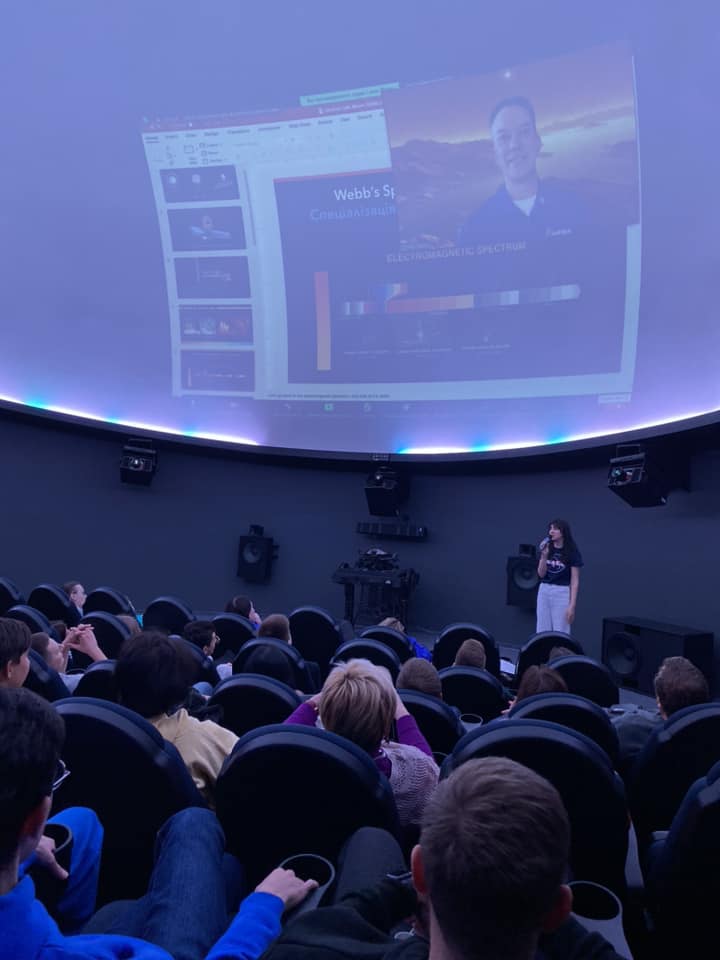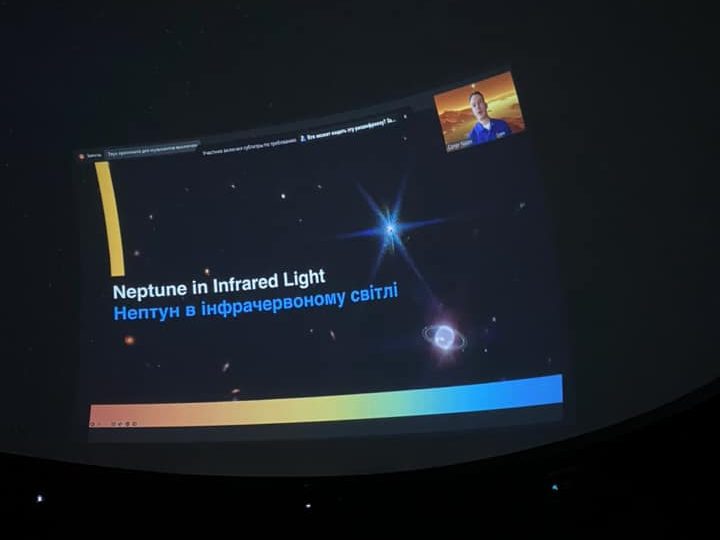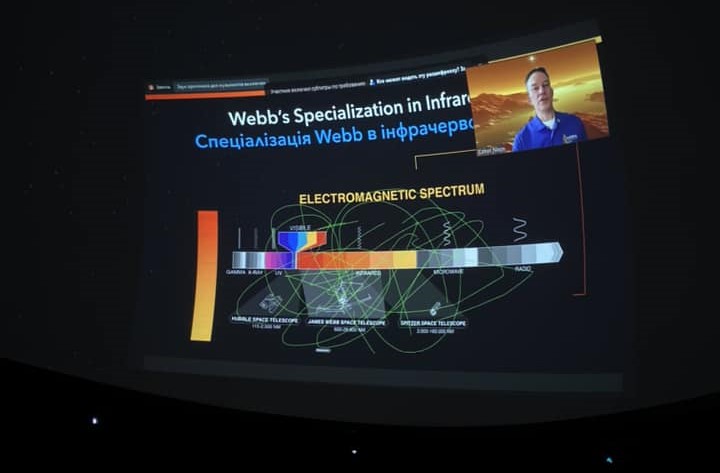As part of World Space Week, Association Noosphere organized a lecture by Conor Nixon, a planetary scientist and head of the Planetary Systems Laboratory at the NASA Goddard Space Flight Center. The event, which took place on October 10, was organized in partnership with the Noosphere Planetarium in Dnipro and Universe. Space. Tech. magazine.
70 space enthusiasts packed into the Noosphere Planetarium, and another 200 tuned in online to hear about the James Webb Telescope and its images of our Solar System.

The James Webb telescope, the successor to the Hubble telescope, is an international project launched into space in 2021. It is intended to study objects in our Solar System. The Webb telescope looks like a hexagon covered with gold, which improves its reflective properties.
The telescope is located one and a half million kilometers further from the Sun than the Earth, and can photograph objects in the opposite direction of the Sun. That is, with the help of James Webb, we can see almost all objects other than the Earth, Venus, Mercury, the Moon and other bodies located between the telescope and the Sun.
What makes the telescope special is that it shows objects in the infrared spectrum. This allows us to see not only pictures of the cosmos, but to understand the properties of the objects photographed. As an example, Mr. Nixon showed images of meerkats and a crocodile in the infrared spectrum. Meerkats are light-colored in the pictures, because they are warm-blooded. The crocodile, on the other hand, is dark, which indicates that it is cold-blooded.
“This shows us that we can learn something completely different from the visible part of the object by looking at the infrared spectrum,” Nixon explained.

He showed regular pictures of Uranus and Neptune from the Hubble telescope and infrared images from James Webb, which show the rings around these planets.
“Thus, we know that Saturn is not the only planet with rings. They are much darker, but we can see them in the infrared spectrum,” said Conor Nixon.
Likewise, thanks to the infrared spectrum imaging, it was possible to detect a haze around the poles of Jupiter. They are caused by the particles drawn there by the planet’s magnetic field reflecting light from the sun.
And on Jupiter’s moon Enceladus, James Webb discovered plumes of water vapor. This represented an important discovery and prompted scientists to explore a number of new questions.
“It was interesting to see if there could be something that could live in such conditions. And this is a topic that could be the goal of future space missions – to search for biological material in space,” said Conor Nixon.
Of course, those present at the lecture were interested in the possibility of the existence of inhabited planets, in particular on exoplanets – those that are similar to Earth.
“The telescope is not large enough to focus and take images of such planets. It would be a dot, or completely invisible. It is necessary to wait until the planet passes against the background of the star. Images from a telescope can tell what gasses are around a planet. With the gasses, you can tell if there is potential for life there. But this does not mean that there is life on this planet. That is, we cannot find not the presence of life, but the possibility of life on the planet,” Nixon explained.
